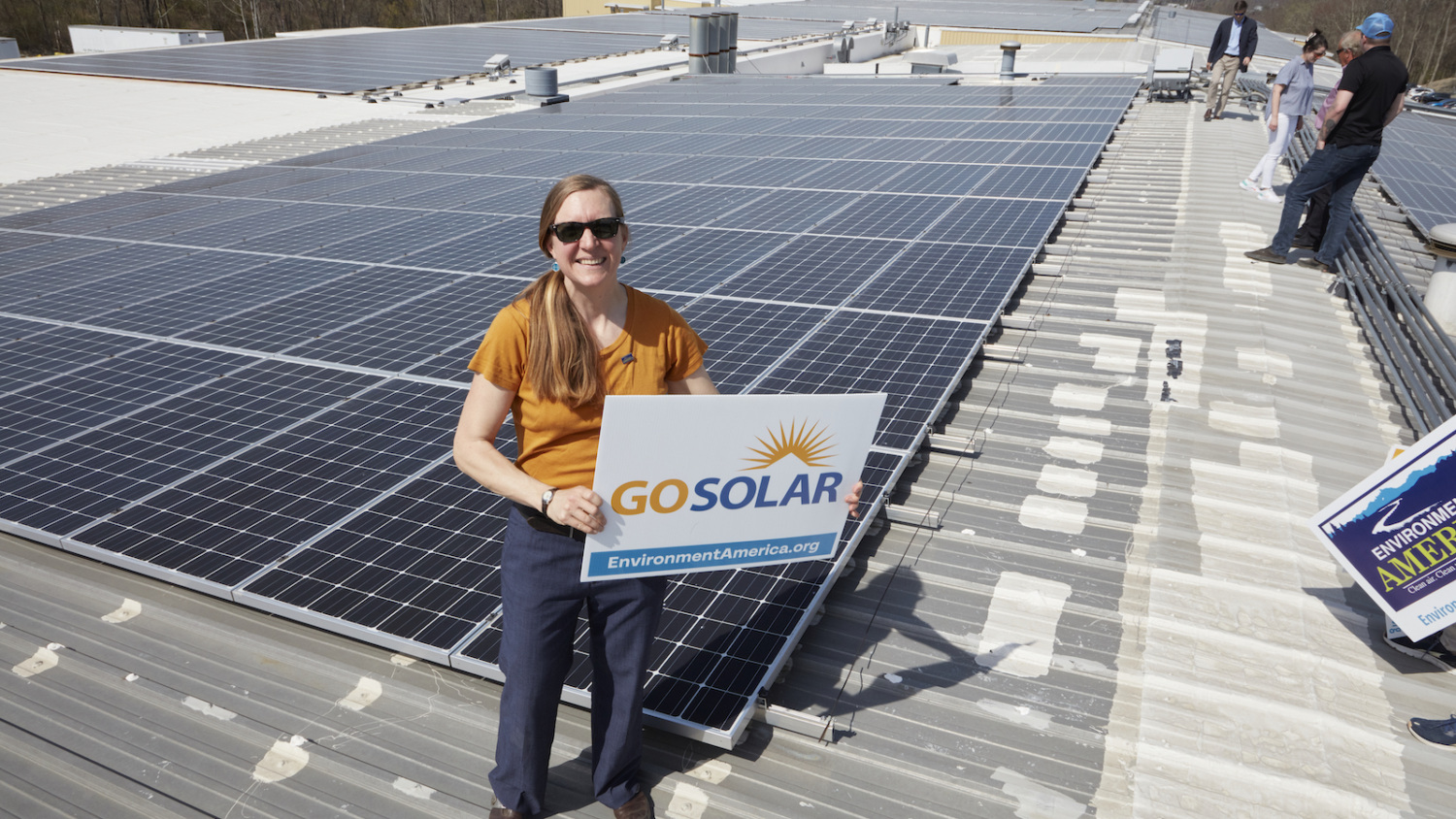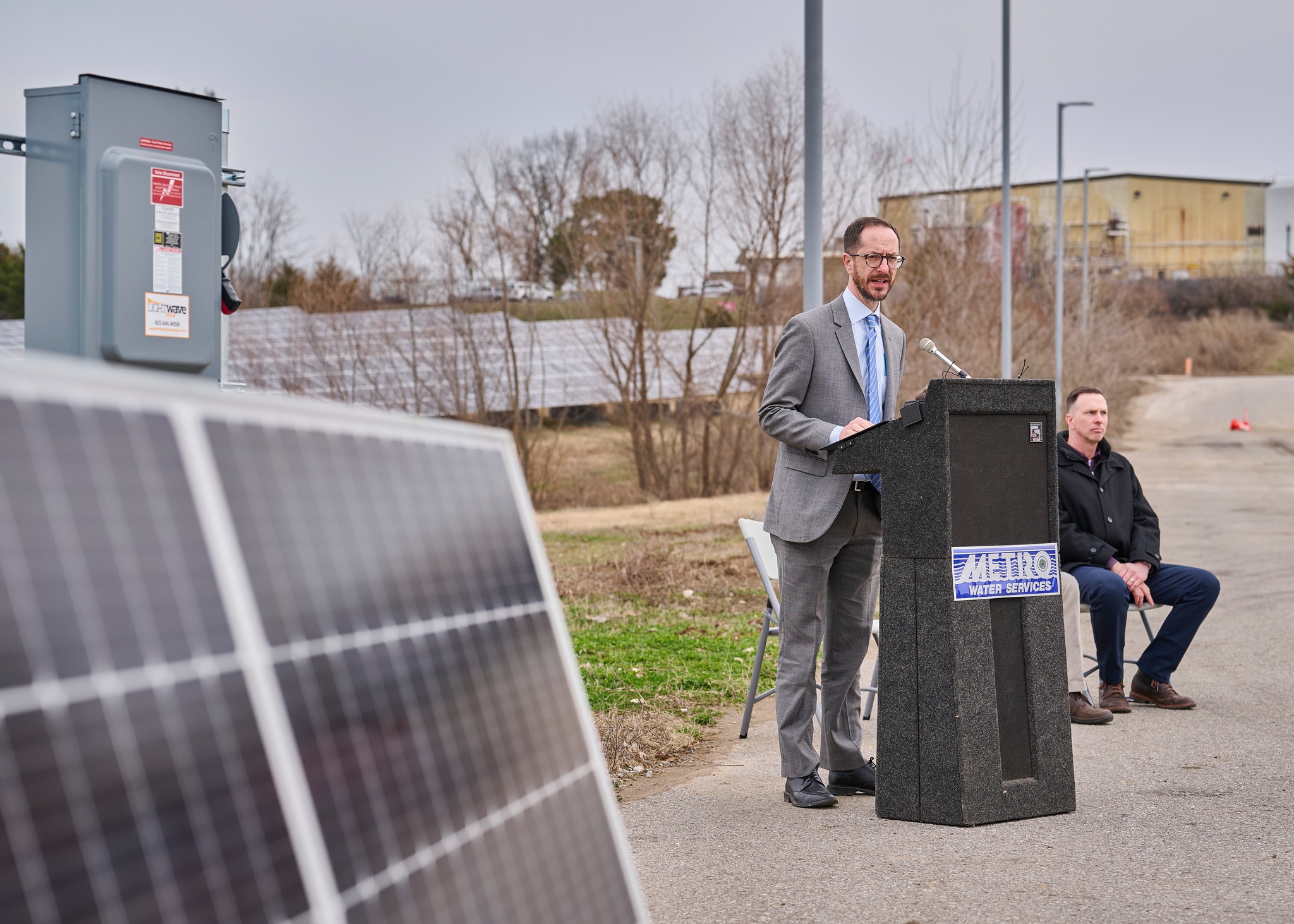Tennessee has become a national leader in clean energy job growth, driven by expanding electric vehicle (EV) and battery storage industries. But it still lags most of the country in solar energy.
A 2024 Forbes report ranked Tennessee No. 31 among the states across a half-dozen solar energy metrics. That ranking should move higher as the Volunteer State continues expanding its network of photovoltaic (PV) facilities and residential solar panels.
Among the recent solar developments in Tennessee was the activation of the Omohundro Solar Project, which will provide a major portion of the energy needed for Nashville’s Metro Water Services (MWS) operations at the agency’s Omohundro campus.

Photo Courtesy Nashville Metro Water Services
The project was completed in late December 2023 and announced a couple of months later by Alternus Clean Energy, a utility-scale clean energy independent power producer whose Lightwave Renewable spearheaded the Omohundro development.
According to a Feb. 16 press release, Omohundro has a total capacity of 2.6 megawatts. It consists of two segments: Omohundro East (1.5 MW) and Omohundro West (1.1 MW).
These segments were secured under a 30-year energy services agreement with Metro Water Services and generate clean, renewable energy to power the local water services.
The new ground-mounted solar field at Omohundro is MWS’s eighth solar installation and the largest to date, according to a news release from the Metropolitan Government of Nashville and Davidson County (“Metro” for short).

Photo Courtesy Metro Nashville
According to the Metro government, MWS’s total solar footprint expanded to 4.414 MW across all installations following the Omohundro activation of Omohundro. That’s enough to offset the energy of about 550 homes. Metro’s total solar footprint rose to 5.52 MW across 30 installations. MWS’s solar footprint represents 79% of all Metro Nashville PV installations.
“I commend Metro Water Services for being a leader in decarbonizing the city’s operations,” Nashville Mayor Freddie O’Connell said in a statement. “Projects like this one put us on the path to securing a clean and reliable energy future for our city. We look forward to many more similar projects.”

Photo Courtesy Freddie O’Connell, Mayor of Metropolitan Nashville & Davidson County
The project will also help Tennessee advance its solar economy. According to a report from the U.S. Energy Information Administration (EIA), PV facilities contribute the second-largest share of clean energy generation in Tennessee at roughly 7% of the state’s renewable generation as of 2022.
Nearly 90% of that solar generation comes from utility-scale facilities with a 1 MW or larger capacity. The rest comes from “smaller, customer-sited generating systems of less than 1 MW, mostly solar panels installed on residential and business rooftops,” the EIA said.
As of mid-2023, Tennessee had about 510 MW of total solar power generating capacity. Most of its utility-scale PV-generating facilities are located in the southwestern part of the state.
Despite rapid growth in solar energy over the past decade, Tennessee has “only begun to scratch the surface of its solar potential,” according to a January 2024 article from Environment America Research & Policy Center. The article cited data from the National Renewable Energy Laboratory and compiled it in its report, “We Have the Power,” showing that Tennessee has the potential for solar to meet 24 times the state’s electricity use in 2020.

Photo Courtesy Environment America
“Even under a 2050 scenario in which transportation, buildings, and other applications have largely electrified, all of Tennessee’s energy needs could be met with solar energy alone,” Environment America noted.





